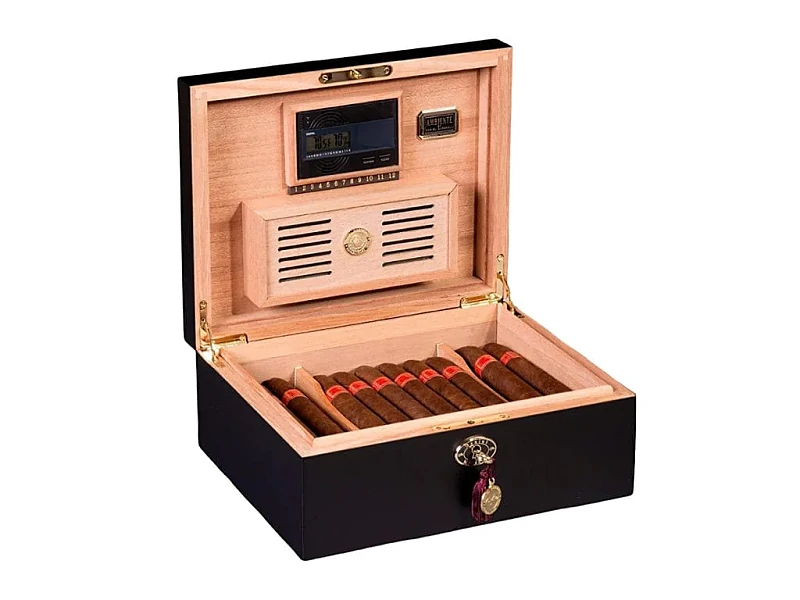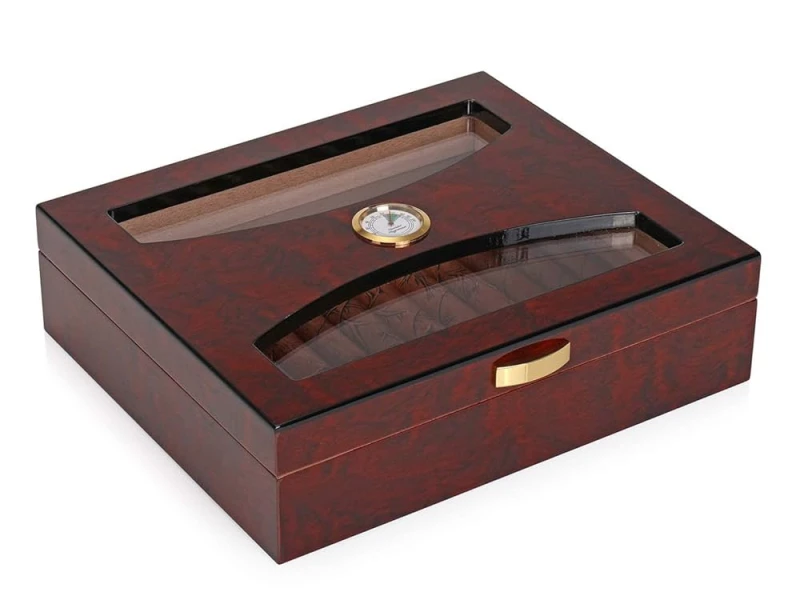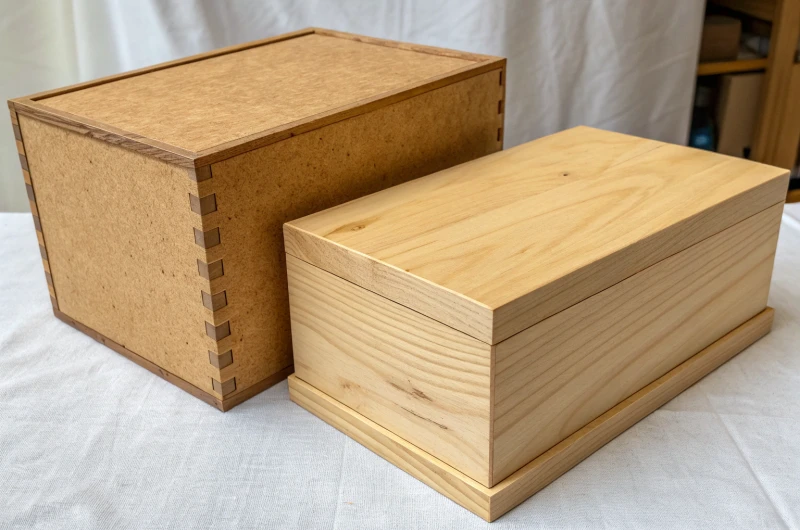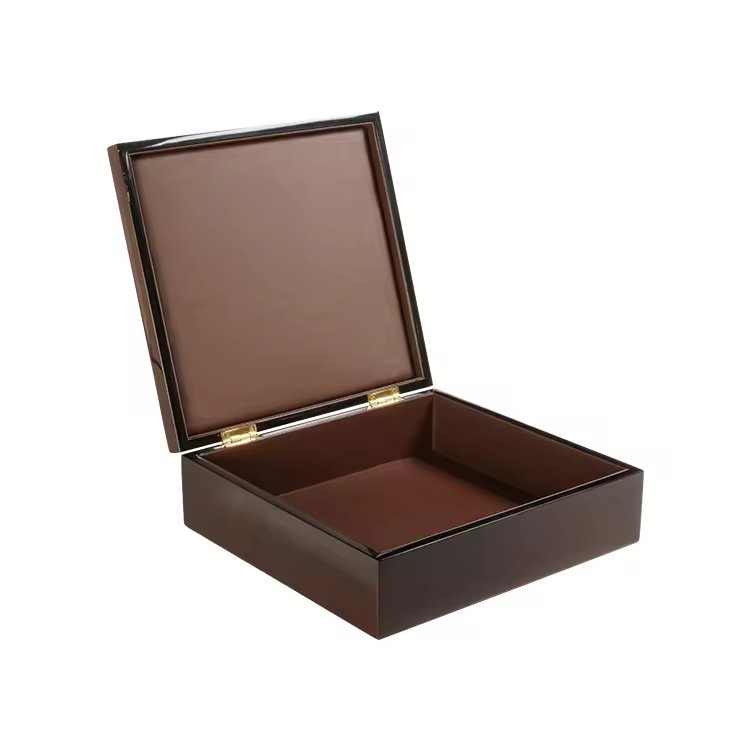
Smart packaging adds digital value, but integrating RFID/NFC into wooden boxes requires careful design.
Placement, material choices, hidden integration, and durability testing ensure smart tags work without harming luxury aesthetics.
I will explain how I approach this balance of technology and craftsmanship.
Why is the placement of RFID/NFC chips critical for both signal performance and aesthetics?
RFID/NFC chips must be discreet but still scannable.
Placement decides whether the chip reads reliably and whether it remains invisible to the customer’s eye.

For one cigar box project, the client wanted an NFC chip for authenticity checks. When placed too deep under the wood panel, scanning failed. By repositioning the chip closer to the lid interior lining, we achieved smooth detection while keeping it hidden.
Key placement rules
- Keep chips near accessible surfaces.
- Avoid stacking under multiple thick layers.
- Hide them under lining, labels, or brand plates.
Strategic placement makes technology invisible but effective.
Loose tags can shift, break, or become visible.
Hidden compartments or laminated layers allow tags to be embedded securely inside the box structure.

In my workshop, I often design double-wall panels or recessed cavities to house RFID stickers. After embedding, I seal the tag under veneer or fabric lining. This way, the chip stays secure and invisible.
Adaptation techniques
- Recess cavities in MDF or plywood layers.
- Laminate veneers over embedded tags.
- Fix chips inside interior partitions or inserts.
By designing space early, we avoid retrofitting problems later.
What material considerations (wood thickness, metal parts, coatings) may affect signal transmission?
Wood is RFID-friendly, but other materials can block or weaken signals.
Thick wood layers, heavy metal fittings, and reflective coatings can all interfere with signal strength.

In a jewelry box project, the client requested brass plates on the lid. During testing, the NFC chip under the plate became unreadable. We solved it by relocating the chip to a fabric-lined tray insert.
Materials to consider
- Wood thickness: tags buried too deep may lose range.
- Metal hinges, locks, plates: create signal shielding.
- Hochglanz-Lackierung: usually safe but adds a thin barrier.
Testing each combination ensures smooth performance.
How can the integration process avoid damaging the box’s structural strength or luxury look?
Poorly planned embedding can weaken joints or spoil finish.
Integration should use structural layers without cutting critical parts, and must preserve surface beauty.

In one project, an inexperienced supplier carved directly into a lid joint, which later cracked. I instead design cavities in non-structural zones, like under velvet bases. This keeps the box strong and flawless.
Bewährte Praktiken
- Avoid hinge zones and corner joints.
- Place tags in flat panel sections.
- Conceal integration under linings or inserts.
The goal is invisible technology inside visible luxury.
Why is it important to test durability and scanning reliability under real usage conditions?
A chip that works in the factory may fail in customer hands.
Testing ensures chips survive handling, humidity, and repeated scans over the product’s life cycle.

I test RFID/NFC tags by scanning through packaging, after shipping simulation, and under varying humidity. For cigar boxes, humidity is especially critical because wood expands and lining adhesives soften.
Durability checks
- Repeated scan reliability.
- Adhesive strength over time.
- Performance after humidity or temperature cycles.
Testing gives confidence that the smart function will work long after unboxing.
What balance should be kept between smart functionality and the handcrafted elegance of the wooden box?
Technology should add value, not overshadow craftsmanship.
The best balance hides RFID/NFC tags so the luxury look remains dominant while the smart function adds invisible value.

Clients often worry that tech will make boxes feel less artisanal. I explain that proper integration makes technology invisible. The customer experiences traditional luxury, with smart features quietly working in the background.
Grundsätze des Ausgleichs
- Design boxes as luxury-first, tech-second.
- Use RFID/NFC as hidden authenticity enhancers.
- Let craftsmanship remain the visible hero.
This way, smart packaging strengthens luxury instead of competing with it.
Schlussfolgerung
RFID/NFC integration in wooden boxes requires thoughtful placement, secure embedding, material awareness, and real testing, ensuring invisible technology supports luxury.
Markenname: WoodoBox
Slogan: Maßgefertigte Holzkisten, handwerklich perfekt gefertigt
Website: www.woodobox.com
WhatsApp: +86 18359265311




